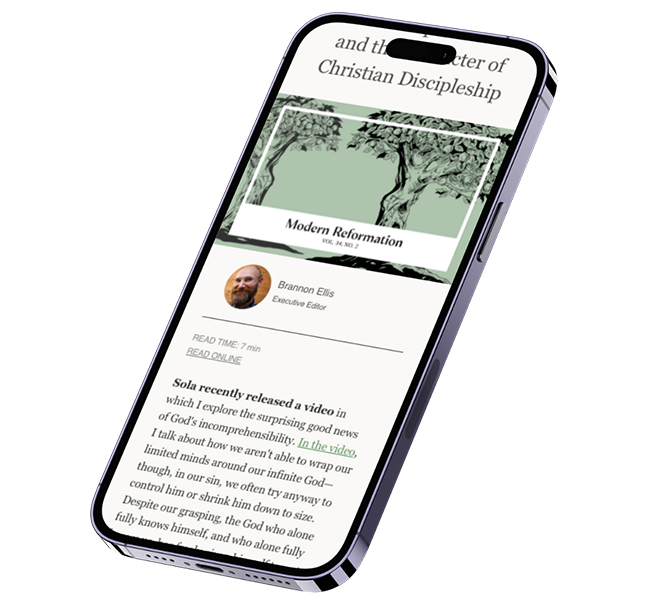Wiley Blackwell | 2023 | 368 pages (paperback) | $45.31
Women in World Christianity: Building and Sustaining a Global Movement is introduced as “the first textbook to focus on women’s experiences in the founding, spread, and continuation of the Christian faith.” It is, in effect, meant as a primary textbook “for both introductory courses on World Christianity and undergraduate and graduate courses specifically focused on women in World Christianity.”
As such, it is, then, primarily an academic tool that will first appeal to authors, professors, and students interested in church history and gender studies. It is an important tool because women comprise and have typically comprised the majority of the world's Christian population. Yet, many of their names, writings, and contributions have often been forgotten.
And the value of this book is not limited to those with a special interest in women's studies, because historians who neglect the contribution of women in church history will do a disservice to themselves and their readers.
This book could also be useful to pastors, since most of their congregations are probably composed of women who might be dealing with some of the issues raised in this volume. And it might even appeal to people like me who, without being professional historians, are interested in discovering the full scope of the history of Christianity and understanding how many of our common suppositions and traditions have originated. For an academic book, the price is not prohibitive.
Focus
Due to the magnitude of the subject, the author, Dr. Gina A. Zurlo, has chosen to focus on the twentieth and twenty-first centuries, with a special emphasis on the shift of numerical growth from the global north (North Europe and North America) to the global south (Africa, Asia, Latin America, the Caribbean, and Oceania). As Co-Director of the Center for the Study of Global Christianity, Research Fellow at Boston University’s Institute on Culture, Religion, and World Affairs, and co-author (among other titles) of the World Christian Encyclopedia, she is well prepared to cover this subject.
The information that she includes on previous centuries is scant. Still, one will find some concise summaries and a mention of many important women, such as female lay theologians of the Protestant Reformation (i.e. Argula von Grumbach, Katherine Parr, Anne Askew, Lady Jane Grey) and missionaries (i.e. Hannah Marshman, Ann Judson, Lottie Moon), to name a few.
The book is inclusive of all traditions who claim the name of Christian. It includes Catholics, Protestants, Independents, Orthodox, and Pentecostals/Charismatics, with a separate category for Evangelicals. A further breakdown shows the inclusion of Jehovah’s Witnesses, Mormons, Quakers, and other similar groups.
Some Modern Reformation readers might object to Zurlo’s focus (and implicit approval) on the progress of women preachers as well as other controversial issues. Still, the information is valuable from a historical viewpoint and can be used as one deems appropriate.
Organization
The book is divided into three parts: Women in World Christianity by Continent, Women in World Christianity by Tradition or Movement, and Women in World Christianity by Selected Topics, for a total of 17 chapters plus an introduction, an overall conclusion, some appendixes, a glossary, and an index. The selected topics in the third part deal with issues that have been particularly relevant to women, such as gender-based violence (sadly still present even in churches), ecological activism, women's theological education (still lacking, especially in the global South), and peacebuilding.
Each chapter includes detailed maps and charts, a bibliography of works cited, a conclusion specific to that chapter, and a list of reflection questions. I have found the conclusions particularly helpful in determining which chapters are more relevant to my immediate interests and which can wait for later. Since this is largely a reference tool, it can be read in any order. Reading it in its entirety, however, will give an overall picture of what women in other parts of the world or traditions are thinking and doing.
The questions at the end of each chapter are particularly thought-provoking. While some are meant to solidify the contents of the chapter, some can open the door for further study and reflection. For example, the chapter on Women in Oceanic Christianity includes the question: “How can Christianity positively contribute to combatting women’s second-class status in society and the church?” (152). And at the end of the chapter on Christianity and Gender-Based Violence, we find the question, “What can Christians do to educate themselves on this issue and take action to combat it?” (279).
The bibliography is excellent for those who want to further their studies on particular subjects. I have penciled in some additional resources in my copy, and I can see how this book can provide a starting point for individual studies and reflections.
Overall, while the book can be valuable for all the above-mentioned reasons, the author’s transparent opinions on controversial issues such as ecumenism and female pastors may require a mature reading with a willingness to investigate the opposite views, which are missing in this volume. In fact, even this lack can provide inspiration for further writings to cover the missing areas.







